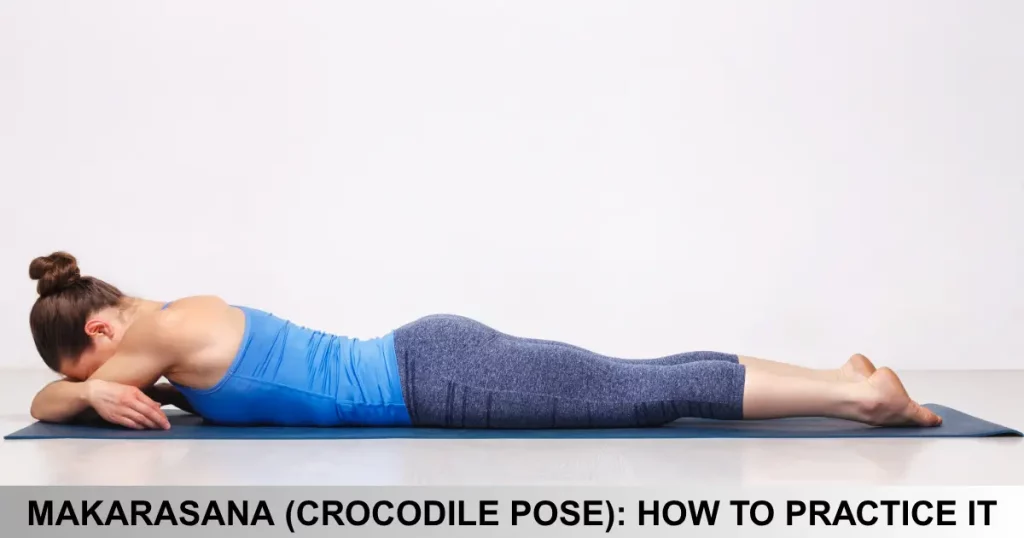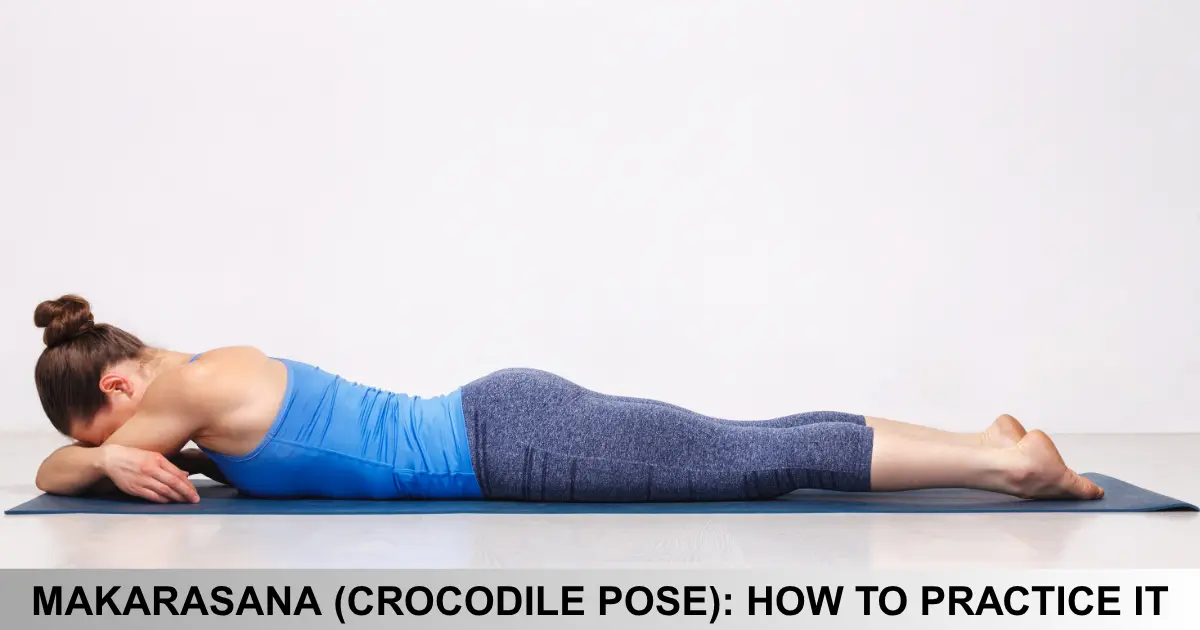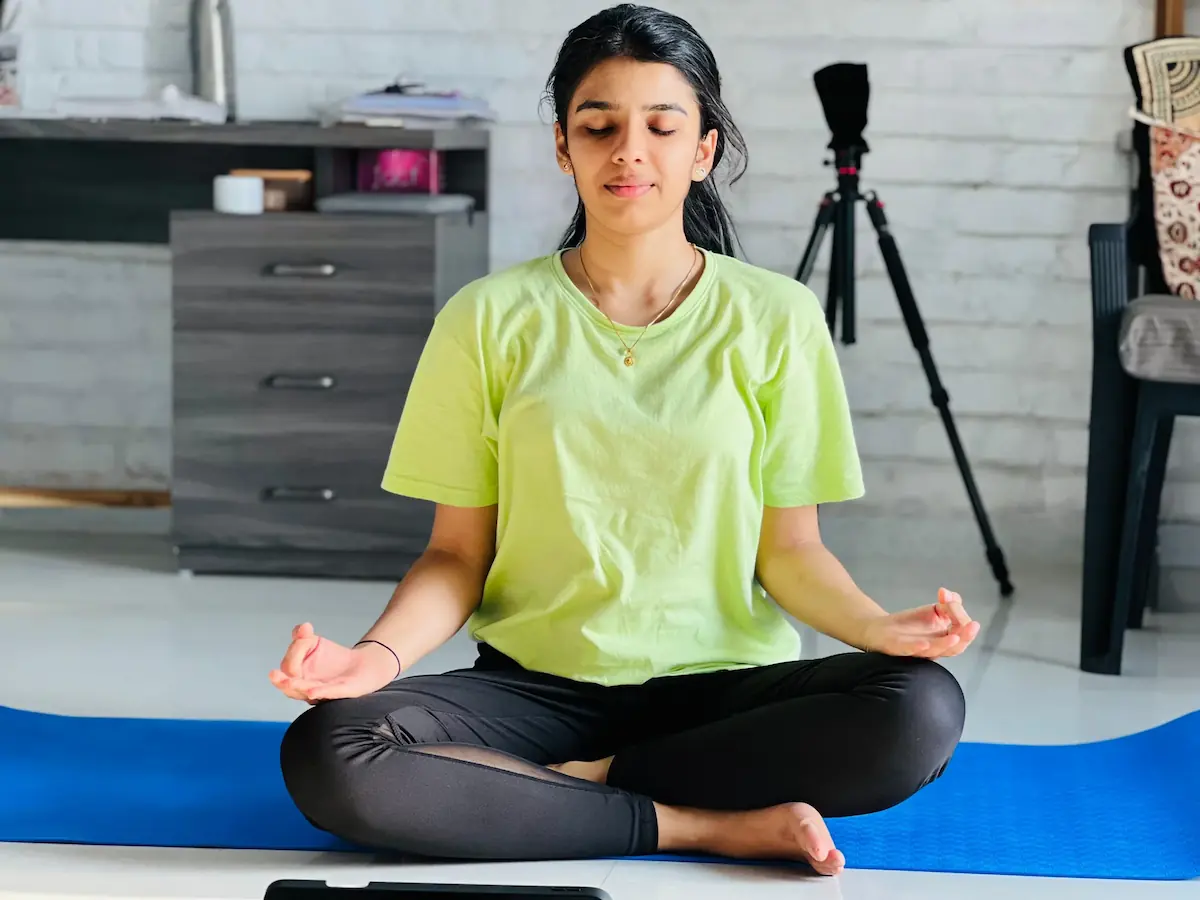Makarasana, or Crocodile Pose, is one of yoga’s most calming and restorative postures. It’s simple enough for beginners yet offers deep healing for the spine, nervous system, and mind. Whether you’re dealing with stress, back pain, or fatigue, this pose is a gentle gateway to relaxation.
What is Makarasana?
Makarasana (pronounced mah-kah-rah-suh-nuh) comes from the Sanskrit word Makara, meaning “crocodile.” This posture mimics the stillness of a crocodile floating effortlessly in water. It’s typically practiced at the end of a yoga session to relax the body and calm the mind.

How to Do Makarasana (Step-by-Step)
Follow these beginner-friendly steps to get into Makarasana:
1. Lie Down on Your Belly
- Use a yoga mat or a soft surface.
- Keep your legs straight and arms by your side initially.
2. Fold Your Arms to Rest Your Head
- Bend your elbows and place one hand over the other.
- Gently rest your forehead on your hands.
- If more comfortable, turn your head to either side.
3. Relax Your Legs
- Let your feet naturally fall outward.
- Ensure the heels are slightly apart to release tension in the lower back.
4. Align Your Spine and Neck
- Keep your head, neck, and spine in a straight line.
- Avoid tilting the chin or arching the back.
5. Focus on Deep Breathing
- Inhale slowly through the nose, feel the belly rise.
- Exhale fully, allowing the body to sink deeper into the mat.
- Maintain steady breathing for 3–5 minutes (or up to 10 minutes for deep relaxation).
Key Health Benefits of Makarasana

1. Relieves Back and Spine Tension
- Helps decompress the lower back and reduce sciatica or lumbar discomfort.
2. Improves Posture
- Encourages spinal alignment and shoulder relaxation, especially helpful for desk workers.
3. Reduces Stress and Anxiety
- Triggers the parasympathetic nervous system, helping you feel calm and grounded.
4. Enhances Lung Function
- Deep belly breathing improves oxygen intake and supports respiratory health.
5. Promotes Better Sleep
- Practicing Makarasana before bed can help with insomnia and improve overall sleep quality.
Precautions and Tips
- Avoid this pose if you’ve had recent abdominal, spinal, or chest injuries.
- Pregnant individuals can modify the pose by placing a bolster or pillow under the chest or choosing a side-lying position.
- Always listen to your body—if you feel discomfort or strain, ease out of the pose gently.
How to Include Makarasana in Your Routine
- End your yoga session with Makarasana to cool down.
- Use it as a midday break to relax your spine.
- Practice before bed to unwind from the day.
- Beginner Yoga Poses for Stress Relief
- Why Your Mind Wanders During Meditation
- Yoga vs Gym: Which is Better for Mental Health?
Frequently Asked Questions (FAQs)
Q1: Is Makarasana safe for beginners?
Yes, it’s one of the most beginner-friendly yoga poses. Just focus on relaxation and deep breathing.
Q2: Can I practice Makarasana every day?
Absolutely! Daily practice enhances its benefits, especially for stress relief and back care.
Q3: How long should I stay in the pose?
Start with 3–5 minutes. With comfort and consistency, you can extend to 10–15 minutes.
Q4: Is it normal to feel sleepy during the pose?
Yes! That’s a sign your nervous system is relaxing. It’s perfectly fine to drift into a light rest.
Conclusion: Embrace Stillness with Makarasana
In our fast-paced lives, Makarasana offers a much-needed pause. This simple pose invites you to slow down, breathe deeply, and reconnect with your body. Whether you’re winding down after a workout or looking for daily mental calm, Makarasana is your go-to posture for peace and restoration.

